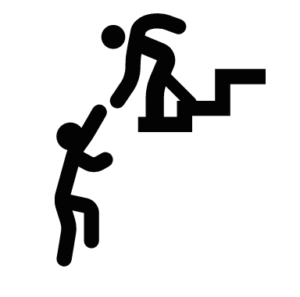25.2: Verb Types
- Page ID
- 257059
\( \newcommand{\vecs}[1]{\overset { \scriptstyle \rightharpoonup} {\mathbf{#1}} } \)
\( \newcommand{\vecd}[1]{\overset{-\!-\!\rightharpoonup}{\vphantom{a}\smash {#1}}} \)
\( \newcommand{\id}{\mathrm{id}}\) \( \newcommand{\Span}{\mathrm{span}}\)
( \newcommand{\kernel}{\mathrm{null}\,}\) \( \newcommand{\range}{\mathrm{range}\,}\)
\( \newcommand{\RealPart}{\mathrm{Re}}\) \( \newcommand{\ImaginaryPart}{\mathrm{Im}}\)
\( \newcommand{\Argument}{\mathrm{Arg}}\) \( \newcommand{\norm}[1]{\| #1 \|}\)
\( \newcommand{\inner}[2]{\langle #1, #2 \rangle}\)
\( \newcommand{\Span}{\mathrm{span}}\)
\( \newcommand{\id}{\mathrm{id}}\)
\( \newcommand{\Span}{\mathrm{span}}\)
\( \newcommand{\kernel}{\mathrm{null}\,}\)
\( \newcommand{\range}{\mathrm{range}\,}\)
\( \newcommand{\RealPart}{\mathrm{Re}}\)
\( \newcommand{\ImaginaryPart}{\mathrm{Im}}\)
\( \newcommand{\Argument}{\mathrm{Arg}}\)
\( \newcommand{\norm}[1]{\| #1 \|}\)
\( \newcommand{\inner}[2]{\langle #1, #2 \rangle}\)
\( \newcommand{\Span}{\mathrm{span}}\) \( \newcommand{\AA}{\unicode[.8,0]{x212B}}\)
\( \newcommand{\vectorA}[1]{\vec{#1}} % arrow\)
\( \newcommand{\vectorAt}[1]{\vec{\text{#1}}} % arrow\)
\( \newcommand{\vectorB}[1]{\overset { \scriptstyle \rightharpoonup} {\mathbf{#1}} } \)
\( \newcommand{\vectorC}[1]{\textbf{#1}} \)
\( \newcommand{\vectorD}[1]{\overrightarrow{#1}} \)
\( \newcommand{\vectorDt}[1]{\overrightarrow{\text{#1}}} \)
\( \newcommand{\vectE}[1]{\overset{-\!-\!\rightharpoonup}{\vphantom{a}\smash{\mathbf {#1}}}} \)
\( \newcommand{\vecs}[1]{\overset { \scriptstyle \rightharpoonup} {\mathbf{#1}} } \)
\( \newcommand{\vecd}[1]{\overset{-\!-\!\rightharpoonup}{\vphantom{a}\smash {#1}}} \)
\(\newcommand{\avec}{\mathbf a}\) \(\newcommand{\bvec}{\mathbf b}\) \(\newcommand{\cvec}{\mathbf c}\) \(\newcommand{\dvec}{\mathbf d}\) \(\newcommand{\dtil}{\widetilde{\mathbf d}}\) \(\newcommand{\evec}{\mathbf e}\) \(\newcommand{\fvec}{\mathbf f}\) \(\newcommand{\nvec}{\mathbf n}\) \(\newcommand{\pvec}{\mathbf p}\) \(\newcommand{\qvec}{\mathbf q}\) \(\newcommand{\svec}{\mathbf s}\) \(\newcommand{\tvec}{\mathbf t}\) \(\newcommand{\uvec}{\mathbf u}\) \(\newcommand{\vvec}{\mathbf v}\) \(\newcommand{\wvec}{\mathbf w}\) \(\newcommand{\xvec}{\mathbf x}\) \(\newcommand{\yvec}{\mathbf y}\) \(\newcommand{\zvec}{\mathbf z}\) \(\newcommand{\rvec}{\mathbf r}\) \(\newcommand{\mvec}{\mathbf m}\) \(\newcommand{\zerovec}{\mathbf 0}\) \(\newcommand{\onevec}{\mathbf 1}\) \(\newcommand{\real}{\mathbb R}\) \(\newcommand{\twovec}[2]{\left[\begin{array}{r}#1 \\ #2 \end{array}\right]}\) \(\newcommand{\ctwovec}[2]{\left[\begin{array}{c}#1 \\ #2 \end{array}\right]}\) \(\newcommand{\threevec}[3]{\left[\begin{array}{r}#1 \\ #2 \\ #3 \end{array}\right]}\) \(\newcommand{\cthreevec}[3]{\left[\begin{array}{c}#1 \\ #2 \\ #3 \end{array}\right]}\) \(\newcommand{\fourvec}[4]{\left[\begin{array}{r}#1 \\ #2 \\ #3 \\ #4 \end{array}\right]}\) \(\newcommand{\cfourvec}[4]{\left[\begin{array}{c}#1 \\ #2 \\ #3 \\ #4 \end{array}\right]}\) \(\newcommand{\fivevec}[5]{\left[\begin{array}{r}#1 \\ #2 \\ #3 \\ #4 \\ #5 \\ \end{array}\right]}\) \(\newcommand{\cfivevec}[5]{\left[\begin{array}{c}#1 \\ #2 \\ #3 \\ #4 \\ #5 \\ \end{array}\right]}\) \(\newcommand{\mattwo}[4]{\left[\begin{array}{rr}#1 \amp #2 \\ #3 \amp #4 \\ \end{array}\right]}\) \(\newcommand{\laspan}[1]{\text{Span}\{#1\}}\) \(\newcommand{\bcal}{\cal B}\) \(\newcommand{\ccal}{\cal C}\) \(\newcommand{\scal}{\cal S}\) \(\newcommand{\wcal}{\cal W}\) \(\newcommand{\ecal}{\cal E}\) \(\newcommand{\coords}[2]{\left\{#1\right\}_{#2}}\) \(\newcommand{\gray}[1]{\color{gray}{#1}}\) \(\newcommand{\lgray}[1]{\color{lightgray}{#1}}\) \(\newcommand{\rank}{\operatorname{rank}}\) \(\newcommand{\row}{\text{Row}}\) \(\newcommand{\col}{\text{Col}}\) \(\renewcommand{\row}{\text{Row}}\) \(\newcommand{\nul}{\text{Nul}}\) \(\newcommand{\var}{\text{Var}}\) \(\newcommand{\corr}{\text{corr}}\) \(\newcommand{\len}[1]{\left|#1\right|}\) \(\newcommand{\bbar}{\overline{\bvec}}\) \(\newcommand{\bhat}{\widehat{\bvec}}\) \(\newcommand{\bperp}{\bvec^\perp}\) \(\newcommand{\xhat}{\widehat{\xvec}}\) \(\newcommand{\vhat}{\widehat{\vvec}}\) \(\newcommand{\uhat}{\widehat{\uvec}}\) \(\newcommand{\what}{\widehat{\wvec}}\) \(\newcommand{\Sighat}{\widehat{\Sigma}}\) \(\newcommand{\lt}{<}\) \(\newcommand{\gt}{>}\) \(\newcommand{\amp}{&}\) \(\definecolor{fillinmathshade}{gray}{0.9}\)Active Verbs

Active verbs are the simplest type of verb: they simply express some sort of action: e.g., contain, roars, runs, sleeps.
Transitive and Intransitive Verbs
Active verbs can be divided into two categories: transitive and intransitive verbs. A transitive verb is a verb that requires one or more objects. This contrasts with intransitive verbs, which do not have objects.
It might be helpful to think of it this way: transitive verbs have to be done to something or someone in the sentence. Intransitive verbs only have to be done by someone.
Let’s look at a few examples of transitive verbs:
- We are going to need a bigger boat.
- The object in this sentence is the phrase “a bigger boat.” Consider how incomplete the thought would be if the sentence only said “We are going to need.” Despite having a subject and a verb, the sentence is meaningless without the object phrase.
- She hates filling out forms.
- Hates is also a transitive verb. Without the phrase “filling out forms,” the phrase “She hates” doesn’t make any sense.
Intransitive verbs, on the other do not take an object.
- John sneezed loudly.
- Even though there’s another word after sneezed, the full meaning of the sentence is available with just the subject John and the verb sneezed: “John sneezed.” Therefore, sneezed is an intransitive verb. It doesn’t have to be done to something or someone.
- My computer completely died.
- Again, died here is enough for the sentence to make sense. We know that the computer (the subject) is what died.
Note: there are some verbs that can act as both transitive and intransitive verbs. Here are a few examples:
| Intransitive | Transitive |
|---|---|
| The fire has burned for hundreds of years. | Miranda burned all of her old school papers. |
| Don’t let the engine stop running! | Karl ran the best horse track this side of the river. |
| The vase broke. | She broke the toothpick. |
Practice
Read the following sentences. Are the verbs in each transitive or intransitive? How can you tell?
- Alba fell out of the car.
- Ian has written over four hundred articles on the subject.
- Javier sings really well.
- Marton wondered about a lot of things.
- Cate gave great gifts.
[practice-area rows=”4″][/practice-area]
[reveal-answer q=”981308″]Show Answer[/reveal-answer]
[hidden-answer a=”981308″]
- Alba fell out of the car. Fell is intransitive; it doesn’t require an object.
- Ian has written over four hundred articles on the subject. Has written is transitive; it has an object: articles.
- Javier sings really well. Sings is intransitive; it doesn’t require an object.
- Note that sings can also be a transitive verb. In the sentence “Lorena sang three songs in the show last night,” the verb sing has the object songs.
- Marton wondered about a lot of things. Wondered is intransitive; it doesn’t require an object.
- Cate gave great gifts. Gave is transitive; it has an object: gifts.
[/hidden-answer]
Multi-Word Verbs
Multi-word verbs a subclass of active verbs. They are made up of multiple words, as you might have guessed. They include things like stirfry, kickstart, and turn in. Multi-word verbs often have a slightly different meaning than their base parts. Take a look at the difference between the next two sentences:
- Ben carried the boxes out of the house.
- Ben carried out the task well.
The first sentence uses a single word verb (carried) and the preposition out. If you remove the preposition (and its object), you get “Ben carried the boxes,” which makes perfect sense. In the second sentence, carried out acts as a single entity. If you remove out, the sentence has no meaning: “Ben carried the task well” doesn’t make sense.
Let’s look at another example:
- She’s been shut up in there for years.
- Dude, shut up.
Can you see how the same principles apply here? Other multi-word verbs include find out, make off with, turn in, and put up with.
Linking Verbs
A linking verb is a verb that links a subject to the rest of the sentence. There isn’t any “real” action happening in the sentence. Sentences with linking verbs become similar to math equations. The verb acts as an equal sign between the items it links.
While to be verbs are the most common linking verbs (is, was, were, etc.), there are other linking verbs as well. Here are some illustrations of other common linking verbs:
- Over the past five days, Charles has become a new man.
- It’s easy to reimagine this sentence as “Over the past five days, Charles = a new man.”
- Since the oil spill, the beach has smelled bad.
- Similarly, one could also read this as “Since the oil spill, the beach = smelled bad.”
- That word processing program seems adequate for our needs.
- Here, the linking verb is slightly more nuanced than an equals sign, though the sentence construction overall is similar. (This is why we write in words, rather than math symbols, after all!)
Helping Verbs
 Helping verbs (sometimes called auxiliary verbs) are, as the name suggests, verbs that help another verb. They provide support and add additional meaning. Here are some examples of helping verbs in sentences:
Helping verbs (sometimes called auxiliary verbs) are, as the name suggests, verbs that help another verb. They provide support and add additional meaning. Here are some examples of helping verbs in sentences:
- Mariah is looking for her keys still.
- Kai had checked the weather three times already.
As you just saw, helping verbs include things like is and had (we’ll look at a more complete list later). Let’s look at some more examples to examine exactly what these verbs do. Take a look at the sentence “I have finished my dinner.” Here, the main verb is finish, and the helping verb have helps to express tense. Let’s look at two more examples:
- By 1967, about 500 U.S. citizens had received heart transplants.
- While received could function on its own as a complete thought here, the helping verb had emphasizes the distance in time of the date in the opening phrase.
- Do you want tea?
- Do is a helping verb accompanying the main verb want, used here to form a question.
- Researchers are finding that propranolol is effective in the treatment of heartbeat irregularities.
- The helping verb are indicates the present tense, and adds a sense of continuity to the verb finding.
The following table provides a short list of some verbs that can function as helping verbs, along with examples of the way they function. A full list of helping verbs can be found here.
| Helping Verb | Function | Examples |
|---|---|---|
| be | Express tense and a sense of continuity. | He is sleeping. |
| Express tense and indicate the passive voice | They were seen. | |
| can | Express ability | I can swim. Such things can help. |
| could | Express possibility | That could help. |
| do | Express negation (requires the word not) | You do not understand. |
| Ask a question | Do you want to go? | |
| have | Express tense and a sense of completion | They have understood. |
| might | Express possibility | We might give it a try. |
| must | Express confidence in a fact | It must have rained. |
| should | Express a request | You should listen. |
| Express likelihood | That should help. | |
| will | Express future tense | We will eat pie. The sun will rise tomorrow at 6:03. |
| would | Express future likelihood | Nothing would accomplish that. |
The negative forms of these words (can’t, don’t, won’t, etc.) are also helping verbs.
Practice
Read the following sentences. In each sentence, identify the active, linking, and helping verbs.
- Guilherme should arrive in the next three minutes.
- Raymond is a fantastic boss.
- Gina had smelled like chrysanthemums and mystery.
- Damian can’t work tonight. Do you want his shift?
- Tim exercises a lot. His standard work out has three different circuits.
[practice-area rows=”4″][/practice-area]
[reveal-answer q=”400700″]Show Answer[/reveal-answer]
[hidden-answer a=”400700″]
- Guilherme shouldarrive in the next three minutes.
- Should is a helping verb. It expresses likelihood.
- Arrive is the active (main) verb in this sentence. It is intransitive.
- Raymond is a fantastic boss.
- Is is a linking verb in this sentence: Raymond = a fantastic boss.
- Gina smelled like chrysanthemums and mystery.
- Smelled is a linking verb in this sentence. There is no active action occurring in the sentence; the sentence is simply stating the way Gina smells.
- Damian can’twork tonight. Do you want his shift?
- Can’t accompanies work. In this sentence it is used to express ability (in this case, the not turns it into a lack of ability).
- Work is an active verb. It is intransitive.
- Do accompanies want. In this sentence, it is used to make a question.
- Want is an active verb. It is transitive: its object is “his shift.”
- Tim exercises a lot. His standard work out has three different circuits.
- Exercises is an active verb. It is also intransitive.
- Has is an active verb. It is transitive: its object is “three different circuits.”
[/hidden-answer]
- Revision and Adaptation of Wikipedia Content. Provided by: Lumen Learning. License: CC BY-SA: Attribution-ShareAlike
- Text: Multi-Word Verbs. Provided by: Lumen Learning. License: CC BY: Attribution
- Transitive verb. Provided by: Wikipedia. Located at: https://en.wikipedia.org/wiki/Transitive_verb. License: CC BY-SA: Attribution-ShareAlike
- Intransitive verb. Provided by: Wikipedia. Located at: https://en.wikipedia.org/wiki/Intransitive_verb. License: CC BY-SA: Attribution-ShareAlike
- Basic Patterns and Elements of the Sentence. Authored by: David McMurrey. Located at: https://www.prismnet.com/~hcexres/textbook/twsent.html. License: CC BY: Attribution
- Image of chain. Authored by: Martin Chapman Fromm. Provided by: The Noun Project. Located at: https://thenounproject.com/search/?q=link&i=15066. License: CC BY: Attribution
- Image of kicking figure. Authored by: Samy Menai. Provided by: The Noun Project. Located at: https://thenounproject.com/search/?q=karate&i=380644. License: CC BY: Attribution
- Auxiliary verb. Provided by: Wikipedia. Located at: https://en.wikipedia.org/wiki/Auxiliary_verb. License: CC BY-SA: Attribution-ShareAlike
- Image of helping figures. Authored by: BenPixels. Provided by: The Noun Project. Located at: https://thenounproject.com/search/?q=help&i=462225. License: CC BY: Attribution

